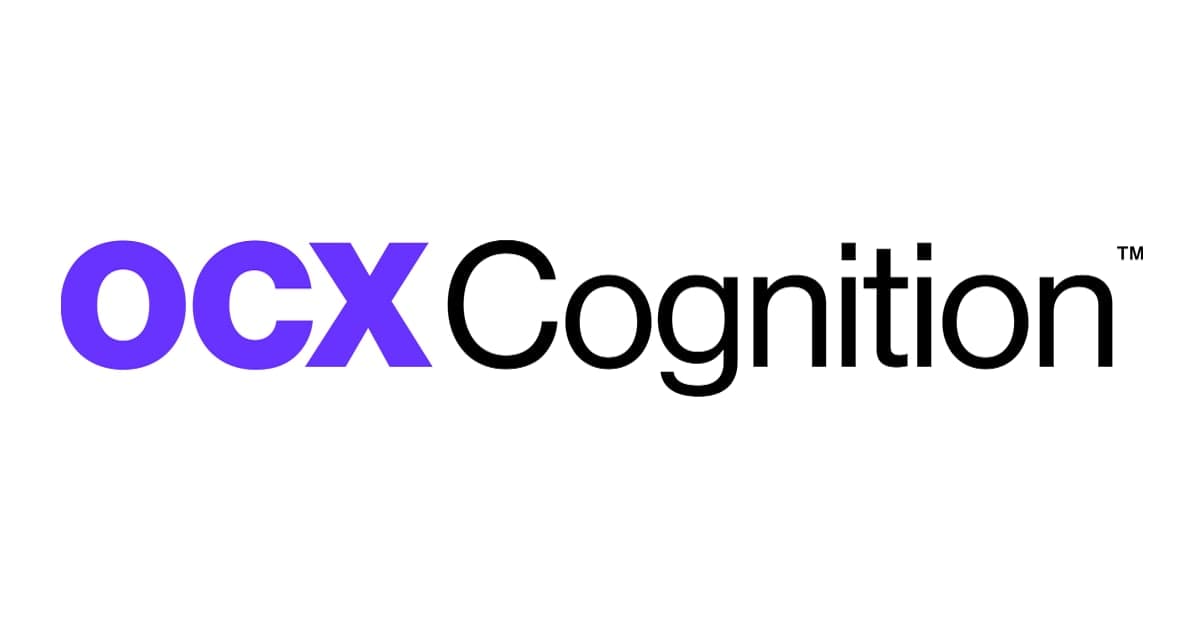OCX Cognition is a team of professionals who have been in the field of customer experience (CX) since its inception. They are the OG’s who thought-led most of what we know in terms of methodologies and tactics to gain insight into how customers feel (and whether or not they’ll stick around).
Here is what they acknowledge: customer experiences have changed, but monitoring those experiences has not. The world of commerce operates at lightning speed, and the best a pulse survey or customer satisfaction check-in can do is provide too little data, too late. Companies that rely on this as their only insight into the customer journey will never make up the time.
After decades spent helping customers set up customer experience programs, this team collectively took a step back and realized there were simply too many missing pieces in the traditional approach to CX. What they found was that as many as 95% of the current systems for CX are a failure, when measured against their stated program goals. So, they designed something entirely new.
The problem with how your business does CX
Any company worth their salt will claim to prioritize customer experiences and satisfaction. There are a few existing approaches:
“Call centers manage our customer’s experiences” and, that’s about it. In other words, executive teams on down assume that the supportive interactions provided by call centers are sufficient. The data gleaned from customer responses to these interactions often makes up the majority of the set used to assess customer satisfaction.
“Customer success managers or account managers provide personalized attention” — CSMs and AMs are the go-to (and often only touchpoint) a business has with their customers. The challenge is that these are often lower-level people talking to lower-level people. This account management angle introduces a lot of guesswork and human error, especially when it comes to tracking experiences.
“This survey will tell us everything we ever need to know” — the advantage of surveys is that they are fairly objective: you ask customers what they think and get hard numbers. The disadvantage is that they are infrequent and participation or response rates can be low.
The latter is perhaps the most common way in which businesses seek to understand customer experiences. With a tiny fraction of customers answering a survey—ranging from as low as 3% in some B2C settings to around 25% in well-managed B2B settings—that data is arguably incomplete. What’s more, teams are always looking in the rearview mirror. By the time they have the information, it’s too late.
A new way to do CX
The leaders at OCX Cognition realized the world was long overdue for a new way to do CX. Their meticulously developed product represents a fundamentally new approach to understanding customer experiences. Foundationally, there are three key differences:
- It spans the whole customer journey.
- It is predictive.
- It covers every customer, every day, in real time.
These groundbreaking differentiators are achieved through a combination of attitudinal data and operational data. Neither of these things is complete without the other.
Take NPS for example:
In the world of CX, calculating a net promoter score (NPS) is a standard practice. What this metric tells a team is where someone falls on a spectrum from detractor to promoter. The score is derived from attitudinal data, such as surveys.
What NPS doesn’t tell you is why someone scored the way they did. Unless you know the “why,” how can you respond in a meaningful way? That’s where operational data comes in. When these two data sets are combined, unified, and analyzed using artificial intelligence (AI), “why” a customer is or isn’t satisfied can be connected to a touchpoint or process.
This is the way in which a body of global, aggregate CX data becomes immensely granular: focusing down to the specific customer with such clarity that you can create coherent, custom action plans that maximize retention.
This kind of knowledge is something you can act on, right away, in advance of a loss. In other words: you can always see what’s coming.
This is future vision
Driven by an artificial intelligence (AI) engine, the OCX Cognition system learns as it goes, which means that insights over time become even clearer and more valuable.
There is no playing catch-up or watching accounts fall away with no idea why. The OCX Cognition CX system generates predictive scores for every account every day. Essentially, this new way of doing CX uncovers a way for a company to predict and reduce risk. You see what’s going right, you see what’s going wrong, and you see it all in time to do something about it.
Here’s what all businesses need to know: you don’t have to wait for customers to tell you about their experience. They’re telling you now. You just need a way to collect the right data much faster. OCX Cognition is the first ever system designed to do that.
The OCX Cognition system empowers teams to align around common calibration, giving accurate shared understanding that drives effective change. CX is overdue for a disruption: and this is the one that businesses have been waiting for.
This is a Contributor Post. Opinions expressed here are opinions of the Contributor. Influencive does not endorse or review brands mentioned; does not and cannot investigate relationships with brands, products, and people mentioned and is up to the Contributor to disclose. Contributors, amongst other accounts and articles may be professional fee-based.

